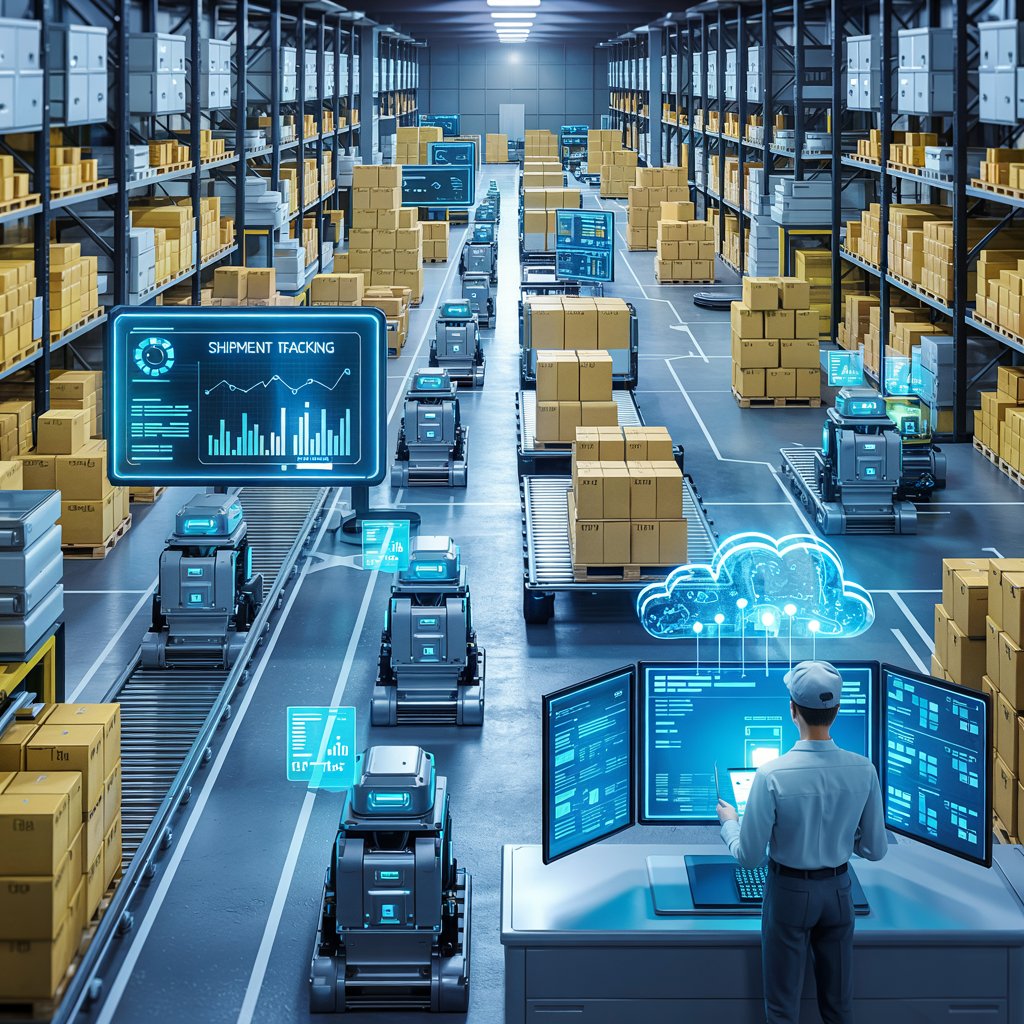How AI is Transforming Freight Forwarding Operations

How AI is Transforming Freight Forwarding Operations
Traditional freight forwarding involves manual coordination of bookings, documents, tracking, and customer communications. It’s time-intensive, prone to human error, and often reactive.
AI brings the ability to:
- Analyze vast data sets instantly
- Predict shipment delays or risks
- Automate repetitive tasks
- Recommend optimal routes or carriers
- Enhance customer interactions via chatbots and smart alerts
The result? Smarter, faster, and more resilient freight operations.

🔍 Top AI Use Cases in Freight Forwarding
Here’s how AI is being applied in real-world freight operations:
1. Predictive ETA & Delay Forecasting
AI algorithms analyze traffic, weather, port congestion, and carrier performance to give highly accurate delivery estimates — reducing surprise delays.
2. Smart Shipment Routing
AI can recommend the most efficient multimodal route based on cost, time, carrier reliability, and customs bottlenecks.
3. Automated Document Processing
AI-powered OCR (Optical Character Recognition) extracts data from bills of lading, invoices, or customs forms, minimizing manual entry.
4. Demand Forecasting & Space Planning
Machine learning models forecast volume spikes or slowdowns, helping forwarders plan capacity and container usage more effectively.
5. AI Chatbots for Customer Service
Chatbots respond instantly to track & trace queries, pricing requests, or booking changes — freeing up human agents for complex issues.
6. Risk Detection in Compliance
AI tools can flag anomalies in shipping patterns, documents, or declarations — improving regulatory compliance and fraud detection.

📊 Real-World Benefits
Companies implementing AI in freight forwarding have seen:
Benefit | Impact |
Faster Quoting & Booking | Up to 60% reduction in response times |
Increased On-Time Delivery | Improved by 20–30% with predictive ETAs |
Lower Document Processing Time | Up to 80% reduction in manual input |
Improved Customer Satisfaction | Faster support and more visibility |
Better Forecasting Accuracy | Reduces under/overbooking by 25%+ |
🧭 How to Start Adopting AI in Freight Forwarding
- Digitize your workflows first – AI needs clean, structured data to deliver results.
- Start with one use case – Like document automation or ETA prediction.
- Leverage modular platforms – Choose systems that allow AI features to be added over time.
- Track performance – Measure the time saved, error reductions, or satisfaction improvements from AI adoption.

🚀 Final Thoughts
AI is no longer optional in freight forwarding — it’s quickly becoming a competitive advantage. By automating routine tasks and delivering real-time intelligence, AI allows forwarders to focus on what matters: serving customers, reducing costs, and growing strategically.
The future of freight is intelligent, automated, and predictive — and it’s already here.
